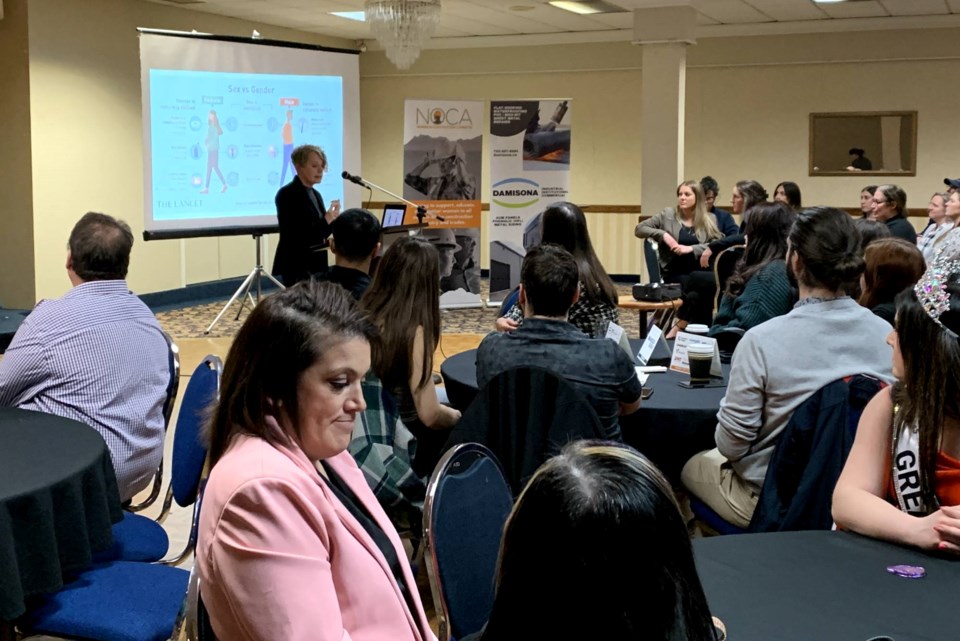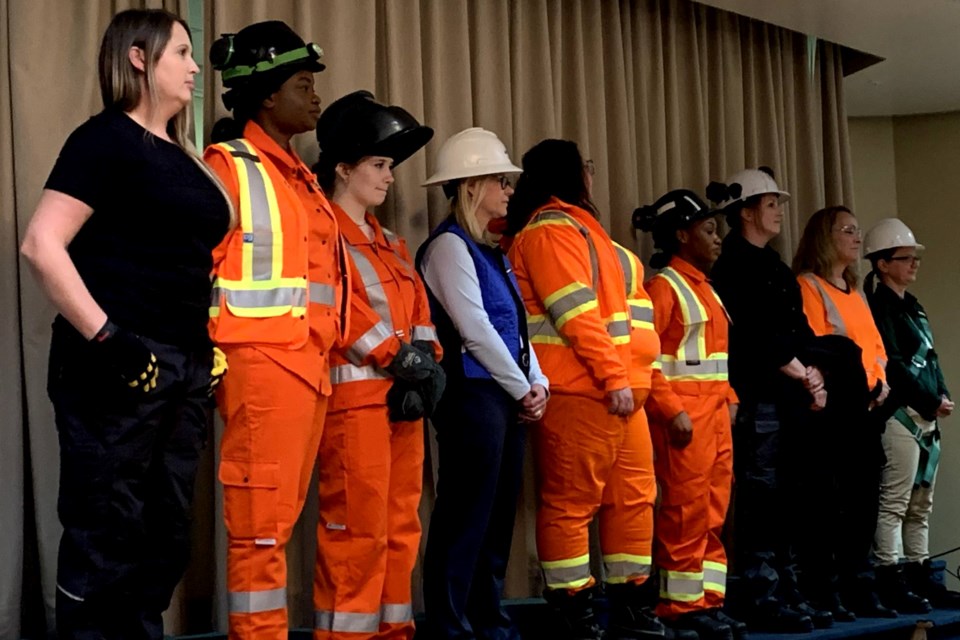Anya Keefe can tell some horrific stories about women wearing badly fitting personal protective equipment (PPE) in the workplace.
There’s one about the woman who broke her wrist after experiencing kickback while operating a hand drill because she was wearing gloves that were too big.
A welder working in mining and construction reported being burned hundreds of times because she couldn’t find coveralls with sleeves and pant legs long enough to provide coverage while working in awkward positions.
A third cut her finger to the bone when her work glove got caught in a portable band saw. Her employer only supplied men’s gloves and the smallest size was still too big on her, so the excess material got caught by the blade.
“She spent 10 hours in urgent care and one month for it to heal closed,” Keefe said. “Three to four months for it to fully heal.”
These are just some of the personal anecdotes Keefe collected while researching women’s experiences with PPE for the Canadian Standards Authority (CSA). Her final report, Canadian Women’s Experiences with Personal Protective Equipment in the Workplace, was published in 2022.
What it reveals is that women in workplaces across Canada are in desperate want, and need, of protective workplace equipment that is well designed, reliable, and fits their bodies.
This is anything but a revelation, Keefe said.
“Researchers and work advocates began drawing attention to this issue of improperly fitting and poorly designed PPE over 50 years ago, and they were trying to draw attention to the specific problems that women face in finding appropriately sized and sufficiently protective PPE,” she said. “So, not a new issue, although we are starting to see some movement on it.”
Keefe has more than 35 years of experience in occupational disease prevention, policy and research and is a former director of the research secretariat at WorkSafeBC.
On April 18, she was the keynote speaker during a one-day conference hosted by the Women in Construction Committee of the Northeastern Ontario Construction Association (NOCA) in Sudbury.
The Evolution and Empowerment of PPE, a first-time event, drew participants together to discuss the importance for PPE that’s specific to women’s needs, and included a luncheon, a live demonstration, and a tradeshow.
Keefe believes more anthropometric data needs to be considered in the design and manufacture of PPE.
That refers to the study and measurement of variability in the human body — physical dimensions like standing height, proportions such waist-to-hip length and body shape, and the measurement of strength, mobility, flexibility and working capacity.
That data can then be used to fit the PPE to the worker, rather than making individual users fit into a product, Keefe said.

In looking at anthropometric data taken from men and women, there’s very little overlap in their proportions, she noted.
“What that means is that you can't take the protective clothing and other PPE that's designed on the basis of male anthropometric data and male proportions and then just simply scale it down linearly and expect that it's going to fit women,” she said.
Using coveralls as an example, Keefe noted that with a scaled down men’s coverall, even if it fits a woman’s height, shoulder breadth or upper chest circumference, it’s usually too tight in the hips. So to fit comfortably in the hips, women are buying coveralls that are too big — too roomy in the shoulders and chest, and too long in the leg.
Women can then have difficulty integrating their coveralls with the rest of their PPE, or the coveralls themselves can become a tripping hazard, and they constantly have to adjust their fit.
In a survey of about 3,000 women from across Canada, Keefe said only six per cent of respondents reported wearing PPE designed for women.
Another 48 per cent said their PPE was unisex, while 35 per cent said their PPE was designed for men.
Many of those women reported either paying out of pocket to buy their own PPE, or modifying their PPE to ensure it fits.
That includes cutting and sewing pant legs, sleeves and vests, or using rubber bands, safety pins or duct tape to secure work gloves, shorten sleeves, and tighten pant legs so they don't drag or create a tripping hazard.
Shockingly, Keefe said, women were making similar modifications to their fall-arrest gear, which is a real concern, she noted.
“All PPE is certified to a standard and when that PPE is modified, the certification of that product is now compromised,” she said.
“More importantly, workers who are wearing that modified PPE are now at risk of serious injury or death should their modified PPE fail on them.”
Women Keefe surveyed said they want more PPE that is comfortable, fits properly, and protects them in the workplace, and less of the “pink-it-and-shrink-it” approach that most manufacturers take, referring to the practice of scaling down men’s PPE and making it pink.
Exceptions are companies like Covergalls, the PPE manufacturer led by Sudburian Alicia Woods, which uses feedback from women working in industry in the design of its workwear. Keefe consulted Woods while compiling information for her report.
Keefe’s report comes with a number of recommendations.
Among them, she calls for a national sizing survey to collect anthropometric data about Canadian workers and their needs.
Manufacturers have to design PPE for different-sized bodies, she said, and Canada needs to harmonize its PPE regulations across jurisdictions. Currently, standards vary between provinces.
“To me, it does not make sense that in a country like Canada that we have uneven and inequitable regulations across the country,” Keefe said.
In the workplace, she said, employers need to start recognizing that a one-size-fits-all approach doesn’t work. Instead, they need to consider different body sizes when procuring their PPE.
Most importantly, she said, Canadian workplaces need more education and awareness that this is a serious health and safety issue facing a significant portion of the workforce.
“I think we're starting to see progress,” Keefe said. “I hope to see more change come.”



